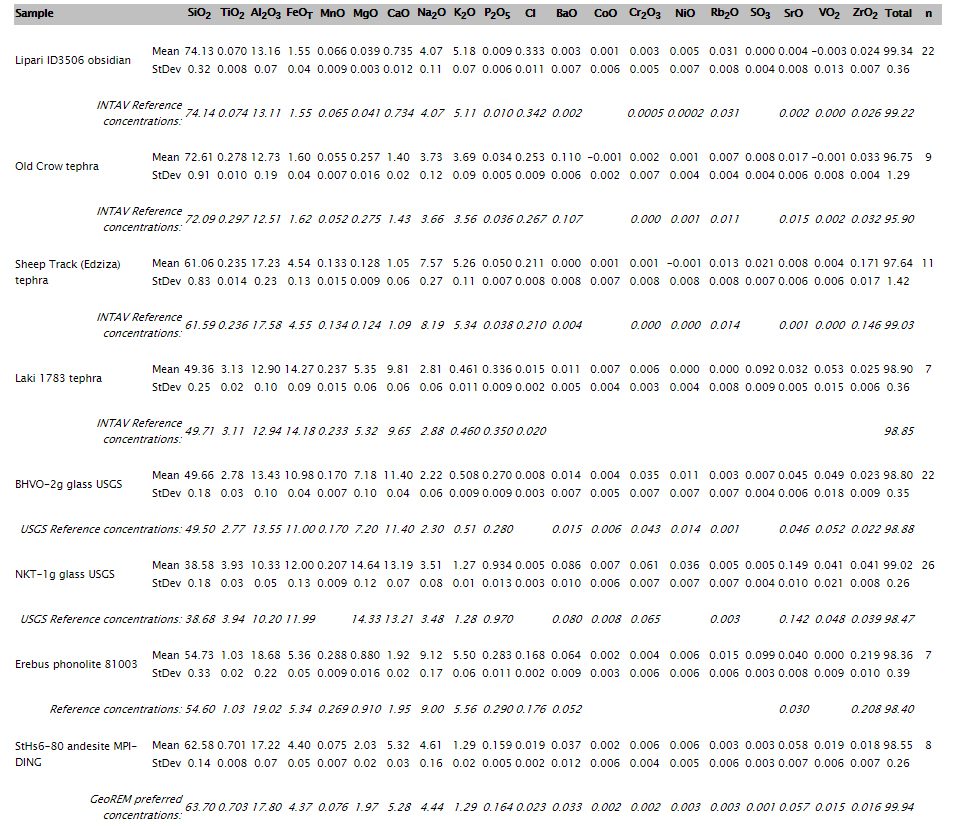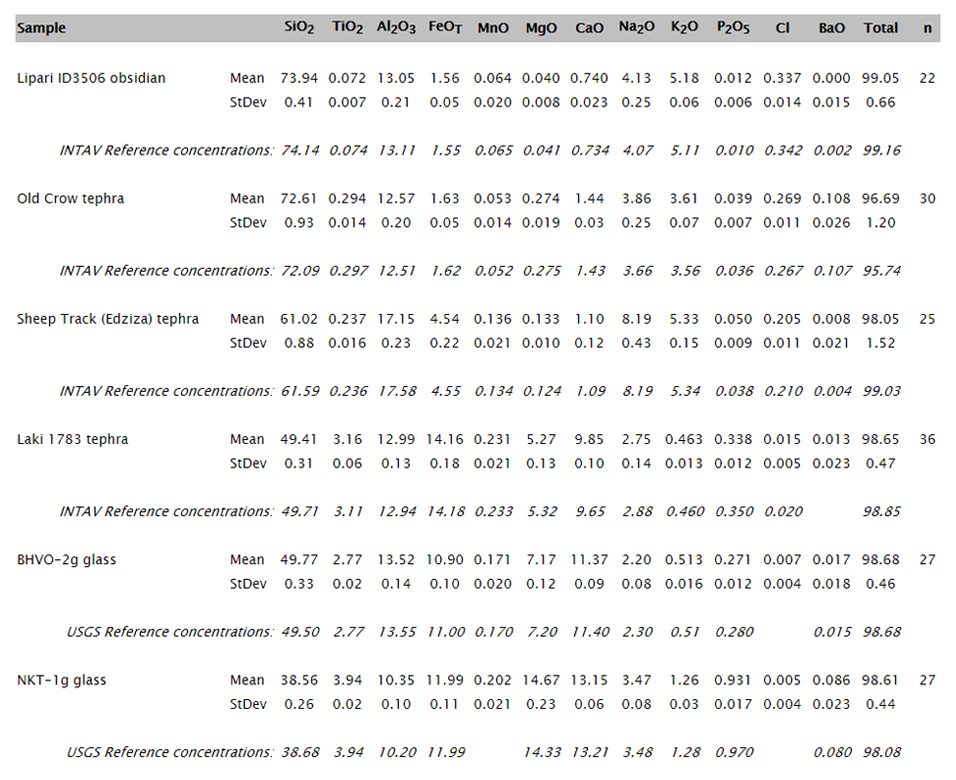To maintain high data quality, instrument performance is routinely monitored using one or more quality control reference materials (secondary standards), typically at both the beginning and end of each analytical session. When a new analytical routine is developed, it is typically tested against multiple reference materials to assess accuracy over a range of concentrations. To facilitate improved accuracy and precision, techniques such as combined EDS-WDS acquisition, blank corrections, quantitative interference corrections, mean atomic number backgrounds, and time-dependent intensity corrections are used on appropriate materials. Concord’s EPMA lab also participates regularly in interlaboratory exercises. This includes G-probe (one or two test glasses per year) and the 2011 INTAV intercomparison of tephrochronology laboratories (Kuehn et al., 2011). These provide a source of ongoing external quality testing. The lab’s results on quality control samples are routinely excellent in terms of both accuracy and precision. Below are examples from the silicate glass trace elements procedure, which forms the basis of a family of analytical routines for silicate minerals and glasses, and the routine tephra glass procedure.
Data QualityBayleigh Meadows2024-12-03T10:27:56-05:00




